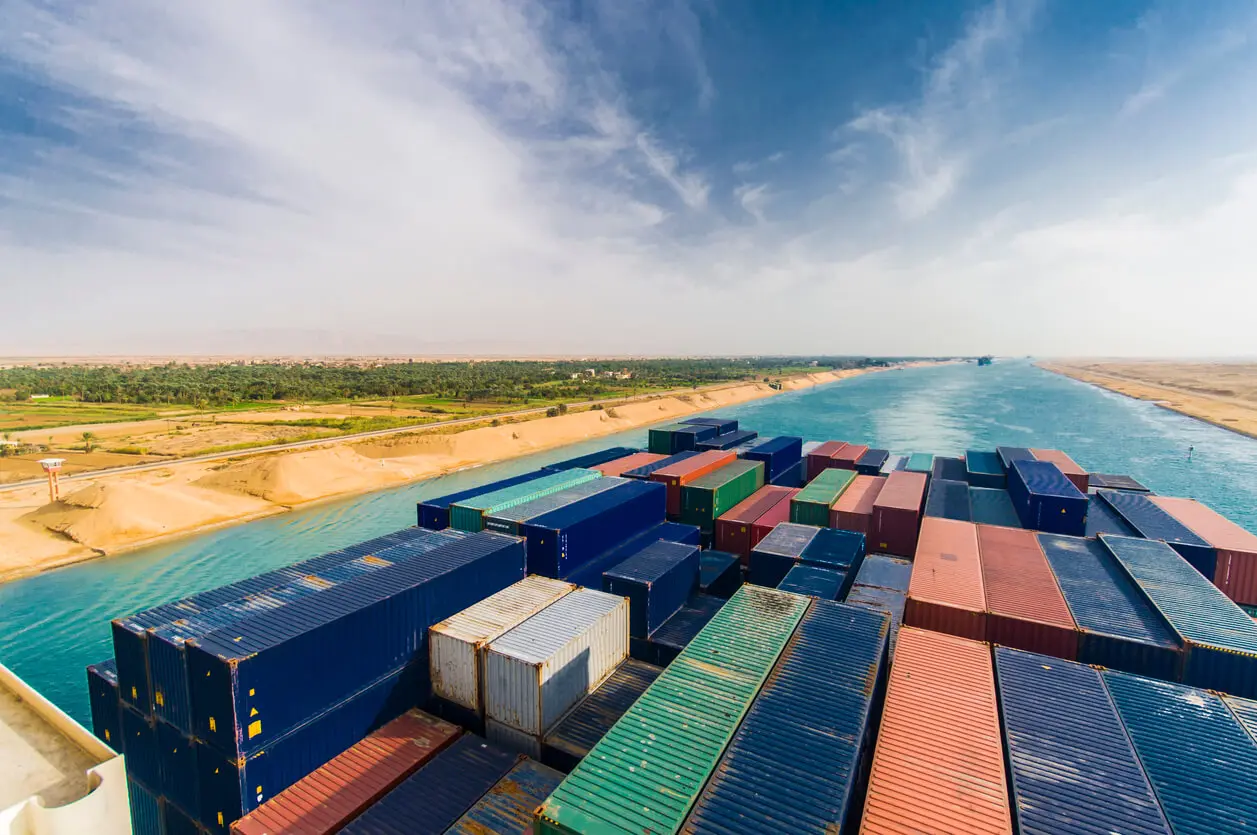Understanding the intricacies of supply chain disruption is crucial for businesses worldwide. These disruptions, when not managed efficiently, can lead to significant losses and operational hurdles. This article delves into the causes, effects, and various management strategies to mitigate the impact of supply chain disruptions.
What is Supply Chain Disruption?
Supply chain disruption refers to any unexpected event or circumstance that causes a significant interruption or delay in the flow of goods, services, or information within a supply chain network. These disruptions can arise from various sources, both internal and external, and can have far-reaching consequences on the efficiency, profitability, and overall performance of the supply chain. Examples of events that can trigger supply chain disruptions include natural disasters (such as hurricanes, earthquakes, or floods), geopolitical conflicts, economic crises, pandemics, cyber-attacks, labor disputes, and transportation failures. Even minor incidents, like a supplier’s production line breakdown or a shipment delay, can have ripple effects throughout the entire supply chain, leading to stockouts, lost sales, and customer dissatisfaction.
Types of Supply Chain Disruption
Supply chain disruptions can be categorized based on their origin or their impact on the supply chain network. Let us take a closer look at some common examples.
Natural disruptions are caused by environmental or natural phenomena, such as severe weather events, earthquakes, volcanic eruptions, or wildfires. These disruptions can damage infrastructure, disrupt transportation routes, and impede the flow of raw materials and finished goods.
Human-caused disruptions stem from human actions or decisions and include factors such as labor strikes, political instability, trade disputes, or cyber-attacks. These events can lead to production stoppages, transportation delays, or disruptions in communication and information flow.
Technological Disruptions arise from failures or vulnerabilities in the technological systems that support the supply chain, such as software glitches, equipment breakdowns, or power outages. These factors can halt production, disrupt inventory management, or impede the flow of information.
Local disruptions are confined to a specific geographic region or facility, such as a fire at a manufacturing plant or a transportation blockade in a particular area. While localized, these events can still have widespread ripple effects throughout the supply chain. Global disruptions, on the other hand, have a widespread impact, affecting multiple regions or countries simultaneously. Examples include global pandemics, major economic crises, or international trade disputes. These events can disrupt supply chains on a large scale, affecting multiple suppliers, manufacturers, and distribution channels.
It is important that businesses understand the various types of supply chain disruptions and their origins, as it enables them to develop effective risk management strategies and contingency plans to mitigate the impact of such disruptions.
Main Causes of Supply Chain Disruption
While supply chain disruptions can arise from numerous sources, there are several primary causes that organizations should be aware of and prepared to address.
Climate Change and Natural Disasters: The increasing frequency and intensity of extreme weather events, such as hurricanes, floods, droughts, and wildfires, pose significant threats to supply chains. These events can damage infrastructure, disrupt transportation routes, and impede the flow of raw materials and finished goods. Additionally, the long-term effects of climate change, such as rising sea levels and shifting weather patterns, can further exacerbate supply chain vulnerabilities.
Geopolitical Conflicts and Trade Disputes: Political instability, trade wars, and international conflicts can have severe consequences for global supply chains. These events can lead to tariffs, sanctions, and restrictions on the movement of goods and materials, disrupting established supply routes and increasing costs. Furthermore, political unrest and civil conflicts can also disrupt local production and distribution channels.
Global Health Crises and Pandemics: The COVID-19 pandemic has highlighted the devastating impact that global health crises can have on supply chains. Pandemics can lead to workforce shortages, factory closures, transportation disruptions, and shifts in consumer demand. These events can also trigger cascading effects, such as hoarding behavior and supply-demand imbalances, further exacerbating the disruption.
Technological Vulnerabilities: Supply chains are increasingly reliant on complex technological systems, including enterprise resource planning (ERP) systems, inventory management software, and automated production lines. Cyber-attacks, software glitches, and system failures can disrupt these critical systems, leading to production stoppages, data breaches, and communication breakdowns.
Supplier Disruptions: Supply chains are inherently interconnected, and disruptions at a single supplier can ripple throughout the entire network. Supplier bankruptcies, labor disputes, quality issues, or production delays can create significant bottlenecks and shortages, impacting downstream operations and customer deliveries.
Transportation and Logistics Failures: Supply chains rely heavily on efficient transportation and logistics networks to move raw materials, components, and finished goods. Disruptions in these networks, such as port congestion, transportation strikes, or infrastructure failures, can severely impact the timely delivery of goods and materials.
Identifying and addressing these root causes is crucial for organizations to develop effective risk management strategies and build resilient supply chains that can withstand and recover from disruptions.
Levels of Severity of Supply Chain Disruption
Supply chain disruptions can vary significantly in their severity, depending on various factors such as the duration of the disruption, the geographic breadth of its impact, the economic consequences, and the sectors affected. Assessing the level of severity is crucial for organizations to allocate appropriate resources and implement effective mitigation strategies. Short-term and localized disruptions are typically confined to a specific geographic region or facility and have a relatively short duration. Examples include a temporary power outage at a manufacturing plant, a transportation blockade in a particular area, or a supplier experiencing a brief production halt. While these disruptions can cause temporary delays and inconveniences, their impact is generally manageable, and operations can resume relatively quickly once the issue is resolved.
Prolonged and regional disruptions have a more extended duration and affect a larger geographic area or multiple facilities within a region. Examples include severe weather events, labor strikes, or civil unrest that impact an entire city or state. These disruptions can significantly disrupt operations, lead to inventory shortages, and require more extensive contingency planning and mitigation efforts. Global and long-lasting disruptions have a widespread impact across multiple regions or countries and can persist for an extended period. Examples include major economic crises, global pandemics, or large-scale natural disasters. These disruptions can have severe and far-reaching consequences, affecting multiple tiers of the supply chain and requiring significant resources and strategic planning to navigate and recover.
Catastrophic disruptions are rare and extreme events that can potentially cripple an entire supply chain network or industry. Examples include major geopolitical conflicts, nuclear incidents, or environmental catastrophes of global proportions. These events can lead to complete supply chain breakdowns, massive economic losses, and long-term disruptions that may require companies to fundamentally redesign their supply chain strategies.
Assessing the level of severity involves evaluating factors such as the duration of the disruption, the geographic breadth of its impact, the economic consequences (including lost revenue, increased costs, and market share losses), and the number of sectors or industries affected. Organizations can then prioritize their response efforts and allocate resources accordingly, ensuring that the most critical areas receive immediate attention while also developing long-term strategies to enhance supply chain resilience.
Effects of Supply Chain Disruption
Supply chain disruptions can have far-reaching and multifaceted effects on an organization’s operations, profitability, and overall performance. These effects can be categorized into short-term and long-term consequences, each with its own set of challenges and implications.
Short-term Effects of Disruption
One of the most immediate effects of a supply chain disruption is the interruption or halt of production activities. This can occur due to a shortage of raw materials, components, or other critical inputs, leading to decreased output and potential stockouts. Disruptions in transportation and logistics networks can also result in significant delivery delays, affecting both inbound supplies and outbound shipments. This can lead to missed delivery windows, dissatisfied customers, and potential penalties or chargebacks. Supply chain disruptions often necessitate alternative sourcing, expedited shipping, and other contingency measures, all of which can drive up operational costs. Additionally, disruptions may lead to price fluctuations in raw materials or finished goods, further straining budgets. Disruptions can create imbalances in inventory levels, with shortages in some areas and excess inventory in others. This can lead to stockouts, lost sales opportunities, and increased carrying costs for excess inventory. Production interruptions, delivery delays, and increased costs can significantly impact an organization’s cash flow, potentially leading to liquidity issues and financial stress.
Long-term Effects of Disruption
Prolonged supply chain disruptions can result in an inability to meet customer demand, leading to lost sales opportunities and market share erosion as customers turn to competitors who can better fulfill their needs. Frequent disruptions, delivery failures, and poor customer service can tarnish an organization’s reputation, making it challenging to regain customer trust and loyalty. Significant disruptions may even necessitate a complete restructuring of an organization’s supply chain network, including reevaluating supplier relationships, sourcing strategies, and distribution channels. This can be a costly and time-consuming process. Depending on the nature and severity of the disruption, organizations may face increased regulatory scrutiny, potentially leading to fines, penalties, or mandated changes to processes and procedures. While some organizations may struggle to recover from a disruption, competitors who have more resilient supply chains may seize the opportunity to gain a competitive advantage, capturing market share and solidifying their position in the industry. Mitigating the short-term and long-term effects of supply chain disruptions requires a proactive approach to risk management, contingency planning, and the implementation of strategies to enhance supply chain resilience and agility.
Examples of Supply Chain Disruption
Supply chain disruptions can occur in various forms and have impacted industries worldwide. Examining real-world examples can provide valuable insights into the causes, consequences, and lessons learned from managing these disruptions effectively. Here are a few notable cases.
Japanese Earthquake and Tsunami (2011): The 9.0-magnitude earthquake and subsequent tsunami that struck Japan in 2011 had far-reaching consequences for global supply chains. The disaster disrupted production at several Japanese manufacturers, including automotive companies like Toyota and Honda, as well as electronics giants like Sony and Panasonic. The disruption rippled through supply chains worldwide, causing shortages of critical components and highlighting the vulnerability of lean and just-in-time production systems.
Thai Floods (2011): In late 2011, severe flooding in Thailand’s industrial heartland disrupted production at numerous factories, including those of major hard drive manufacturers like Western Digital and Seagate. The floods caused a global shortage of hard drives, affecting computer manufacturers and leading to price hikes for consumers. This event highlighted the importance of geographic diversification and risk mitigation strategies in supply chains.
West Coast Port Labor Disputes (2014-2015): Prolonged labor disputes between dockworkers and port operators at major West Coast ports in the United States caused significant disruptions in the flow of goods. The slowdown and temporary shutdowns at ports like Los Angeles and Long Beach led to cargo backlogs, shipping delays, and inventory shortages for retailers and manufacturers relying on these ports for imports and exports.
Coronavirus Pandemic (2020-2023): The COVID-19 pandemic has been one of the most disruptive events for global supply chains in recent history. Factory shutdowns, transportation restrictions, and shifts in consumer demand caused widespread shortages of essential goods, from personal protective equipment to consumer electronics. The pandemic also exposed the vulnerabilities of highly globalized supply chains and the need for increased resilience and flexibility.
Suez Canal Blockage (2021): In March 2021, a massive container ship became wedged across the Suez Canal, blocking one of the world’s busiest trade routes for nearly a week. The blockage caused a massive traffic jam of ships and disrupted global supply chains, with some companies rerouting shipments and incurring additional costs. This incident served as an example of the potential impact that isolated events can have on major chokepoints in global trade networks.

These examples demonstrate the diverse range of disruptions that can impact supply chains, from natural disasters to geopolitical events and labor disputes. They also underscore the importance of proactive risk management, supply chain visibility, and the development of contingency plans to mitigate the effects of such disruptions.
Managing Supply Chain Disruption
In order to minimize their impact, maintain operations, and ensure business continuity, it is important for organizations to effectively manage supply chain disruptions. Let us discuss a few key strategies and best practices for managing supply chain disruptions.
Risk Management Principles
The first step in managing disruptions is to identify potential risks and vulnerabilities within the supply chain. This includes conducting thorough risk assessments, mapping the supply chain network, and identifying critical components, suppliers, and transportation routes. Once risks are identified, organizations must assess the likelihood and potential impact of each risk. This involves analyzing historical data, monitoring industry trends, and considering internal and external factors that could contribute to disruptions. Based on the risk assessment, organizations should develop comprehensive mitigation plans that outline specific actions and contingencies to address potential disruptions. These plans should cover supplier management, inventory management, transportation and logistics, and communication protocols. Supply chain risks are dynamic and can evolve over time. Organizations should, therefore, continuously monitor for emerging risks and review their mitigation plans regularly to ensure they remain effective and aligned with changing business needs and market conditions.
Strategies for Resilience
Maintaining a diverse and geographically dispersed supplier base can help mitigate the impact of localized disruptions. By sourcing critical components or materials from multiple suppliers in different regions, organizations can reduce their reliance on a single supplier or location. Implementing appropriate inventory management strategies, such as maintaining safety stock levels or adopting a just-in-case approach, can provide a buffer against disruptions and ensure continuity of operations during temporary shortages or delays. The development of alternative transportation routes and logistics options can help organizations quickly reroute shipments and maintain the flow of goods in the event of disruptions to primary transportation channels. Fostering collaboration and information sharing among supply chain partners, including suppliers, customers, and logistics providers, can improve visibility and enable more effective coordination and decision-making during disruptions. By adopting emerging technologies, such as blockchain, Internet of Things (IoT), and artificial intelligence (AI), businesses can enhance supply chain transparency, real-time monitoring, and predictive analytics capabilities, allowing them to anticipate and respond to disruptions more effectively.
Organizations should develop comprehensive business continuity plans that outline strategies for maintaining critical operations, allocating resources, and ensuring the safety and well-being of employees during significant disruptions. By implementing these strategies and fostering a culture of proactive risk management, organizations can enhance their supply chain resilience, minimize the impact of disruptions, and ensure continuity of operations in the face of unexpected events.
Creating Your Own Supplier Audit Checklist
To effectively manage supply chain disruptions, it is crucial to regularly assess and monitor the resilience and preparedness of your suppliers. One way to accomplish this is by creating a comprehensive supplier audit checklist that evaluates various aspects of their operations and risk management practices. The following steps serve as a guide to help you develop your own supplier audit checklist.
Business Continuity Planning: Evaluate whether your suppliers have robust business continuity plans in place to address potential disruptions. Check if they have identified critical operations, developed contingency strategies, and established clear communication protocols.
Risk Assessment and Mitigation: Assess if your suppliers conduct regular risk assessments to identify potential vulnerabilities in their supply chain. Review their risk mitigation strategies, including supplier diversification, safety stock levels, and alternative sourcing options.
Disaster Recovery and Emergency Preparedness: Examine your suppliers’ disaster recovery plans and emergency preparedness measures. Ensure they have protocols for handling natural disasters, cyber threats, and other potential crises that could impact their operations.
Financial Stability and Resiliency: Evaluate your suppliers’ financial health and resilience. Review their financial statements, credit ratings, and cash flow management to assess their ability to withstand prolonged disruptions or economic downturns.
Quality Management Systems: Assess the robustness of your suppliers’ quality management systems, including their quality control processes, product testing, and traceability measures. Strong quality practices can help minimize disruptions caused by product defects or recalls.
Supply Chain Visibility and Transparency: Determine the level of visibility and transparency your suppliers provide in their supply chain operations. Evaluate their ability to track and trace materials, components, and finished goods throughout the supply chain network.
Workforce Management: Review your suppliers’ workforce management practices, including their ability to maintain adequate staffing levels, contingency plans for labor shortages, and employee training programs to ensure operational continuity.
Regulatory Compliance: Ensure that your suppliers are compliant with relevant industry regulations, environmental standards, and labor laws. Non-compliance can lead to legal issues, fines, and operational disruptions.
Geographic Diversification: Assess the geographic distribution of your suppliers’ facilities and operations. Diversification across multiple regions can help mitigate the impact of localized disruptions caused by natural disasters, political unrest, or transportation issues.
Technology and Innovation: Evaluate your suppliers’ adoption of emerging technologies and innovative solutions to enhance supply chain resilience. This could include their use of predictive analytics, automation, or digital supply chain platforms.
By incorporating these elements into your supplier audit checklist, you can gain a comprehensive understanding of your suppliers’ preparedness and ability to manage supply chain disruptions effectively. Regular audits and open communication with suppliers can help identify potential vulnerabilities and enable collaborative efforts to improve supply chain resilience.
Emerging Technologies for Managing Supply Chain Disruption
As supply chains become increasingly complex and susceptible to disruptions, organizations are turning to emerging technologies to enhance their resilience, visibility, and responsiveness. These technologies offer innovative solutions to address the challenges posed by supply chain disruptions and enable more agile and efficient operations. There are a number of key emerging technologies that are transforming supply chain management:
Transformative Technologies
AI and ML algorithms can analyze vast amounts of data from various sources, such as IoT sensors, weather patterns, and social media, to identify potential disruptions before they occur. These technologies can also optimize supply chain operations by predicting demand, suggesting inventory levels, and recommending alternative sourcing or transportation routes in the event of disruptions.
Learn how Intuendi AI can help you manage supply chain disruptions:
Blockchain technology provides a decentralized, tamper-proof ledger that can enhance supply chain transparency and traceability. By creating an immutable record of transactions and movements, blockchain can help organizations track the provenance of goods, identify bottlenecks, and streamline processes, reducing the impact of disruptions caused by counterfeit products or supply chain fraud.
Internet of Things (IoT) devices, such as sensors and tracking devices, can provide real-time visibility into the movement of goods, environmental conditions, and asset performance throughout the supply chain. This data can be used to monitor for potential disruptions, optimize routing, and enable predictive maintenance, minimizing downtime and delays.
Robotic systems and automated processes can help organizations maintain operations during disruptions caused by labor shortages or safety concerns. Automated warehouses, autonomous vehicles, and robotic manufacturing lines can improve efficiency, reduce human error, and enhance supply chain resilience.
Cloud-based platforms and big data analytics tools enable organizations to collect, store, and analyze vast amounts of supply chain data from various sources. This data can be used to identify patterns, predict disruptions, and optimize decision-making, improving supply chain agility and responsiveness.
Practical Examples of Application
Companies like Siemens and GE are using IoT sensors and AI algorithms to monitor the performance of industrial equipment and predict when maintenance is required. This proactive approach helps prevent unplanned downtime and disruptions caused by equipment failures. Companies like Walmart and IBM have implemented blockchain-based solutions to track the provenance of food products from farm to store, enhancing transparency and enabling rapid identification and containment of potential contamination or disruptions.
Retailers like Walmart and Target are using AI and machine learning to analyze customer data, social media trends, and historical sales patterns to predict demand more accurately. This helps them optimize inventory levels and avoid stockouts or excess inventory during supply chain disruptions. Companies like Amazon, UPS, and Waymo are exploring the use of autonomous vehicles and drones for last-mile deliveries, providing alternative transportation options in the event of disruptions to traditional logistics networks. By embracing these emerging technologies, these organizations have the ability to gain greater visibility, agility, and resilience in their supply chains, enabling them to anticipate and respond more effectively to disruptions, and in so doing allow them to mitigate their impact, and maintain business continuity.
Future Challenges and Opportunities in Managing Supply Chain Disruption
As supply chains continue to evolve and face new challenges, organizations must remain proactive and innovative in their approach to managing disruptions. While the future holds uncertainties, it also presents opportunities for companies to enhance their resilience and adaptability. A number of potential future challenges and opportunities in managing supply chain disruption exist.
The effects of climate change, such as rising sea levels, extreme weather events, and shifting weather patterns, are likely to intensify in the coming years. This will pose significant challenges for supply chains, potentially disrupting transportation routes, damaging infrastructure, and impacting the availability of natural resources. Read more on how to make your supply chain more sustainable here.
Ongoing geopolitical tensions, trade disputes, and the potential for new tariffs or sanctions can create instability and disruptions in global supply chains. Companies will need to navigate these challenges while maintaining operational continuity and compliance with evolving regulations. As supply chains become increasingly digitized and interconnected, the risk of cyber threats, such as ransomware attacks, data breaches, and system vulnerabilities, will continue to grow. Securing supply chain data and systems will be crucial to prevent disruptions caused by cyber incidents. Supply chains are becoming increasingly complex, with global footprints, multi-tier supplier networks, and intricate logistics operations. Managing this complexity while maintaining visibility and control will be a significant challenge for organizations. The rapid pace of technological advancements in supply chain management will require a skilled and adaptable workforce. Addressing talent and skill gaps in areas such as data analytics, digital technologies, and risk management will be essential for organizations to leverage new tools and strategies effectively.
However, it is important that we not only focus on the challenges of managing supply chain disruptions but highlight the possible opportunities thereof. The continued adoption of digital technologies, such as IoT, AI, and blockchain, will enable greater visibility, automation, and real-time decision-making capabilities, enhancing supply chain resilience and responsiveness. Fostering closer collaboration and information sharing among supply chain partners, including suppliers, customers, logistics providers, and even competitors, can create more robust and agile networks capable of mitigating disruptions collectively. To reduce exposure to global disruptions, some organizations may explore opportunities for localization or reshoring, bringing production and sourcing closer to end markets. This could lead to more resilient and agile supply chains, albeit with potential trade-offs in cost and efficiency. As environmental concerns grow, organizations may seek to develop more sustainable and circular supply chain models, reducing waste, promoting resource efficiency, and mitigating the impact of disruptions caused by resource scarcity or environmental regulations. Companies that prioritize supply chain risk management, invest in resilience strategies, and effectively navigate disruptions may gain a competitive advantage over those that fail to adapt, attracting customers seeking reliable and consistent service.
Navigating these future challenges and opportunities will require a proactive and innovative mindset, continuous learning, and a willingness to adapt and transform supply chain strategies. By embracing new technologies, fostering collaboration, and prioritizing sustainability and resilience, organizations can position themselves to thrive in an increasingly complex and disruption-prone supply chain landscape.
Learn how Intuendi AI helped one business flourish after a major supply chain disruption in our case study:






